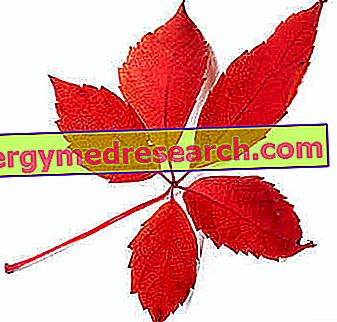Premise
The following indications are for information purposes EXCLUSIVELY and are not intended to replace the opinion of professional figures such as doctor, nutritionist or dietician, whose intervention is necessary for the prescription and composition of CUSTOMIZED food therapies.

Low fiber diet - low residue diet
Dietary fiber is a group of soluble or insoluble vegetable polymers, NOT digestible for human beings. However, this is an extremely important nutritional component since it performs the functions of:
- Increased post prandial satiety
- Regulation of intestinal peristalsis
- Maintenance of intestinal hygiene from toxic waste and maintenance of physiological bacterial flora
- Modulation / slowing of fat and sugar absorption
- Reduction of cholesterol absorption and bile reabsorption
- Reduced insulin surge
There are temporary or permanent conditions which require a reduction of the fiber in the diet to constitute a diet called "low in fiber or low residue diet". As often happens, the needs of the various clinical cases are quite different from one another and, although they can be linked to the need to reduce the fiber, sometimes they require very different secondary characteristics.
The low-fiber or low-residue diet should be applied in cases of:
- Irritable bowel syndrome (chronic diarrhea)
- Colitis (inflammatory, infectious, chemical, etc.)
- Intolerances and allergies (in acute state)
- Pharmacological therapies (antibiotics)
- Intestinal radioactive therapy
- Intestinal resection (due to cancer, Crohn's disease or ulcerative colitis)
- Preparations for endoscopic diagnostic investigations of the itestinal tract (eg colonoscopy)
- etc.
Other precautions or accessory features of the low-fiber or low-residue diet can be:
- Absence of lactose and lactulose
- Absence of toxic molecules, even in small concentrations (polycyclic aromatic hydrocarbons, acrolein, acrylamide, etc.)
- Absence of spices (pepper, chilli, coriander, cumin, turmeric, curry etc.)
- Use of less violent cooking methods, which do not reach very high temperatures
- Choice of digestible foods
- Choice of easily chewable and seedless foods
In summary, the low-fiber or low-residue diet consists of drastically reducing ALL foods containing good amounts of dietary fiber (vegetables); consequently, it would be good practice to prefer the refined ones, that is, deprived of their fibrous component. Some examples of plant foods suitable for low-fiber or low-residue diet are:
- Cereals, flours, and white, refined derivatives
- PASSED legumes with vegetables (NOT blended)
In case the low residual diet should be prolonged for a long time ...
- Peeled or squeezed or centrifuged fruit and vegetables
- Raw leafy vegetables (to reduce portions)
- etc.
Other precautions to follow in preparing low-fiber or low-residue diets are:
- Drink plenty of water, to introduce the water portion normally taken with foods of vegetable origin and to optimize the fecal volume
- Replenish the fiber a little at a time, especially following possible constipation
- Evaluate the relevance of using pre- and probiotic foods
- NEVER take HOT milk (due to the presence of lactulose, osmotic component)
- etc.
NB : for the low-fiber or low-residual diet, it is recommended NOT to take foods that have more than 1g of fiber per serving and to consult food labels to ensure that the ingredients or nutritional values are suitable for treatment.
Useful supplements in case of low fiber or low residue diet
Food supplements useful in case of low fiber or low residue diet are of different kinds; first of all it is recommended to use a good product containing mineral salts and vitamins, especially potassium, magnesium, vit. C, vit. K and B-carotene, which are lacking in a diet low in fresh fruit and vegetables. On the other hand, it is not possible to determine the dosage because it depends essentially on individual needs, the composition of the diet and the time for which it is continued.
Secondly, if appropriate, it is possible to supplement with probiotics in order to preserve the integrity of the intestinal bacterial flora. With a low residue diet the colon bacteria alter their composition favoring the development of putrescent strains to the detriment of the "good" ones; in this case, it is advisable to take at least a billion micro-organisms a day (read the label of the specific product), strictly on an empty stomach and for about 3-4 weeks in all.
Example
- Child with frequent diarrhea probably infected with Norovirus; normally rowing 3 times a week.
| Sex | Male | |||
| Age | 11 | |||
| Stature cm | 145 | |||
| Stature percentile | 50-75th percentile | |||
| Weight kg | 40 | |||
| Percentile weight | 50-75th percentile | |||
| Percentile of normality | 25th / 75th percentile | |||
| Kcal basal metabolism (Schofield equation = | 1361.2 | |||
| Coefficient of physical activity level | Allettato, lightweight, No Aus. 1.41 | |||
| Kcal energy expenditure | 1919.3 | |||
| Diet | NORMO CALORICA | 1919Kcal | ||
| Lipids | 30% | 575, 8Kcal | 64g | |
| Protein | 1.5g / kg | 240Kcal | 60g | |
| Carbohydrates | 57.5% | 1103, 5kcal | 294, 3g | |
| Alcohol | 0g | |||
| Breakfast | 15% | 288kcal | ||
| Snack | 5% | 100kcal | ||
| Lunch | 40% | 767kcal | ||
| Snack | 5% | 100kcal | ||
| Dinner | 35% | 671kcal | ||
Example of Low Residue Diet - Day 1
| Breakfast 15% kcal TOT | |||
| Whole white yogurt | 250g, 152.5kcal | ||
| Biscuits | 35g, 127.75kcal | ||
| Snack 5% kcal TOT | |||
| Orange juice | 200ml, 90kcal | ||
| Lunch 40% kcal TOT | |||
| Rice oil | |||
| White polished rice | 90g, 336.4kcal | ||
| Parmigiano | 5g, 19.6kcal | ||
| Boiled turkey breast | |||
| Turkey breast | 100g, 97kcal | ||
| Wheat bread | 50g, 133kcal | ||
| Extra virgin olive oil | 15g, 135kcal | ||
| Snack 5% kcal TOT | |||
| Whole white yogurt | 125g, 76.25kcal | ||
| Rusks | 15g, 63.9kcal | ||
| Dinner 35% kcal TOT | |||
| Minestrina in broth | |||
| Semolina pasta | 30g, 106, 8kcal | ||
| Parmigiano | 5g, 19.6kcal | ||
| Steamed sea bass fillet | |||
| Sea bass, various species | 100g, 111kcal | ||
| Potatoes (steam) | 200g, 154kcal | ||
| Extra virgin olive oil | 20g, 180kcal | ||
| Wheat bread | 50g, 133kcal | ||
Example of Low Residue Diet - Day 2
| Breakfast 15% kcal TOT | |||
| Whole white yogurt | 250g, 152.5kcal | ||
| Biscuits | 35g, 127.75kcal | ||
| Snack 5% kcal TOT | |||
| Orange juice | 200ml, 90kcal | ||
| Lunch 40% kcal TOT | |||
| Pasta with tomato sauce | |||
| Semolina pasta | 90g, 320.4kcal | ||
| Tomato sauce | 100g, 24kcal | ||
| Parmigiano | 5g, 19.6kcal | ||
| Boiled chicken breast | |||
| Chicken breast | 100g, 110kcal | ||
| Wheat bread | 50g, 133kcal | ||
| Extra virgin olive oil | 15g, 135kcal | ||
| Snack 5% kcal TOT | |||
| Whole white yogurt | 125g, 76.25kcal | ||
| Rusks | 15g, 63.9kcal | ||
| Dinner 35% kcal TOT | |||
| Rice in broth | |||
| White polished rice | 30g, 112.1kcal | ||
| Parmigiano | 5g, 19.6kcal | ||
| Steamed tuna fillet | |||
| Fresh tuna fillet, yellow fins | 100g, 108kcal | ||
| Extra virgin olive oil | 20g, 180kcal | ||
| Wheat bread | 50g, 133kcal | ||
| Banana | 150g, 133.5kcal | ||
Example of Low Residue Diet - Day 3
| Breakfast 15% kcal TOT | |||
| Whole white yogurt | 250g, 152.5kcal | ||
| Biscuits | 35g, 127.75kcal | ||
| Snack 5% kcal TOT | |||
| Orange juice | 200ml, 90kcal | ||
| Lunch 40% kcal TOT | |||
| Semolina | |||
| semolina flour | 90g, 324kcal | ||
| Parmigiano | 5g, 19.6kcal | ||
| Boiled calf | |||
| Veal sirloin | 100g, 110kcal | ||
| Wheat bread | 50g, 133kcal | ||
| Extra virgin olive oil | 15g, 135kcal | ||
| Snack 5% kcal TOT | |||
| Whole white yogurt | 125g, 76.25kcal | ||
| Rusks | 15g, 63.9kcal | ||
| Dinner 35% kcal TOT | |||
| Minestrina in broth | |||
| Semolina pasta | 30g, 106, 8kcal | ||
| Parmigiano | 5g, 19.6kcal | ||
| Cod fillet | |||
| Cod or Atlantic hake | 120g, 98.4kcal | ||
| Potatoes (steam) | 200g, 154kcal | ||
| Extra virgin olive oil | 20g, 180kcal | ||
| Wheat bread | 50g, 133kcal | ||
Example of Low Residue Diet - Day 4
| Breakfast 15% kcal TOT | |||
| Whole white yogurt | 250g, 152.5kcal | ||
| Biscuits | 35g, 127.75kcal | ||
| Snack 5% kcal TOT | |||
| Orange juice | 200ml, 90kcal | ||
| Lunch 40% kcal TOT | |||
| Risotto with lemon scent | |||
| White rice, polished | 90g, 336.4kcal | ||
| Grated lemon peel | QB | ||
| Parmigiano | 5g, 19.6kcal | ||
| Butter | 10g, 71.7kcal | ||
| Boiled turkey breast | |||
| Turkey breast | 100g, 97kcal | ||
| Wheat bread | 50g, 133kcal | ||
| Extra virgin olive oil | 5g, 45kcal | ||
| Snack 5% kcal TOT | |||
| Whole white yogurt | 125g, 76.25kcal | ||
| Rusks | 15g, 63.9kcal | ||
| Dinner 35% kcal TOT | |||
| Minestrina in broth | |||
| Semolina pasta | 30g, 106, 8kcal | ||
| Parmigiano | 5g, 19.6kcal | ||
| Steamed sea bream fillet | |||
| Sea bream | 120g, 108kcal | ||
| Potatoes (steam) | 200g, 154kcal | ||
| Extra virgin olive oil | 20g, 180kcal | ||
| Wheat bread | 50g, 133kcal | ||
Example of Low Residue Diet - Day 5
| Breakfast 15% kcal TOT | |||
| Whole white yogurt | 250g, 152.5kcal | ||
| Biscuits | 35g, 127.75kcal | ||
| Snack 5% kcal TOT | |||
| Orange juice | 200ml, 90kcal | ||
| Lunch 40% kcal TOT | |||
| Pasta with olives | |||
| Semolina pasta | 90g, 320.4kcal | ||
| Olive | 50g, 117kcal | ||
| Parmigiano | 5g, 19.6kcal | ||
| Boiled turkey breast | |||
| Turkey breast | 100g, 110kcal | ||
| Wheat bread | 50g, 133kcal | ||
| Extra virgin olive oil | 5g, 45kcal | ||
| Snack 5% kcal TOT | |||
| Whole white yogurt | 125g, 76.25kcal | ||
| Rusks | 15g, 63.9kcal | ||
| Dinner 35% kcal TOT | |||
| Rice in broth | |||
| White polished rice | 30g, 112.1kcal | ||
| Parmigiano | 5g, 19.6kcal | ||
| Steamed sea bass fillet | |||
| Sea bass, various species | 100g, 111kcal | ||
| Extra virgin olive oil | 20g, 180kcal | ||
| Wheat bread | 50g, 133kcal | ||
| Banana | 150g, 133.5kcal | ||
Example of Low Residue Diet - Day 6
| Breakfast 15% kcal TOT | |||
| Whole white yogurt | 250g, 152.5kcal | ||
| Biscuits | 35g, 127.75kcal | ||
| Snack 5% kcal TOT | |||
| Orange juice | 200ml, 90kcal | ||
| Lunch 40% kcal TOT | |||
| Semolina | |||
| semolina flour | 90g, 324kcal | ||
| Parmigiano | 5g, 19.6kcal | ||
| Boiled calf | |||
| Veal sirloin | 100g, 110kcal | ||
| Wheat bread | 50g, 133kcal | ||
| Extra virgin olive oil | 15g, 135kcal | ||
| Snack 5% kcal TOT | |||
| Whole white yogurt | 125g, 76.25kcal | ||
| Rusks | 15g, 63.9kcal | ||
| Dinner 35% kcal TOT | |||
| Minestrina in broth | |||
| Semolina pasta | 30g, 106, 8kcal | ||
| Parmigiano | 5g, 19.6kcal | ||
| Steamed tuna fillet | |||
| Fresh tuna fillet, yellow fins | 100g, 108kcal | ||
| Extra virgin olive oil | 20g, 180kcal | ||
| Wheat bread | 50g, 133kcal | ||
| Banana | 150g, 133.5kcal | ||
Example of Low Residue Diet - Day 7
| Breakfast 15% kcal TOT | |||
| Whole white yogurt | 250g, 152.5kcal | ||
| Biscuits | 35g, 127.75kcal | ||
| Snack 5% kcal TOT | |||
| Orange juice | 200ml, 90kcal | ||
| Lunch 40% kcal TOT | |||
| Bean puree (without peel) | |||
| Ripe beans | 270g, 315.9kcal | ||
| Parmigiano | 5g, 19.6kcal | ||
| Boiled turkey breast | |||
| Turkey breast | 100g, 97kcal | ||
| Wheat bread | 50g, 133kcal | ||
| Extra virgin olive oil | 15g, 135kcal | ||
| Snack 5% kcal TOT | |||
| Whole white yogurt | 125g, 76.25kcal | ||
| Rusks | 15g, 63.9kcal | ||
| Dinner 35% kcal TOT | |||
| Rice in broth | |||
| White polished rice | 30g, 112.1kcal | ||
| Parmigiano | 5g, 19.6kcal | ||
| Cod fillet | |||
| Cod or Atlantic hake | 120g, 98.4kcal | ||
| Potatoes (steam) | 200g, 154kcal | ||
| Extra virgin olive oil | 20g, 180kcal | ||
| Wheat bread | 50g, 133kcal | ||



